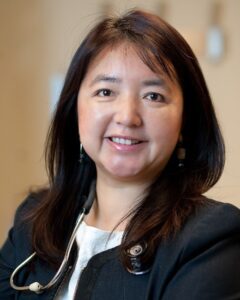
2025 – 2026 ISCD President
Dr. Angela Man-Wei Cheung, MD, PhD, FRCPC, CCD
ISCD recently welcomed Dr. Angela Cheung as the President of our Board of Directors during the Annual Business Meeting of the Society on Feb. 21, 2025. Dr. Cheung has been an active ISCD member for over 25 years.
Dr. Angela M. Cheung is Professor of Medicine, KY and Betty Ho Chair of Integrative Medicine at University of Toronto (UT) and Senior Physician Scientist at University Health Network (UHN). She is the Founding Director of University Health Network Osteoporosis Program and the Founding Director of University of Toronto Centre of Excellence in Skeletal Health Assessment (CESHA).
President’s Message
I am honored and humbled to be serving as the ISCD’s 25th president. I am an internal medicine specialist, cross-appointed in endocrine and medical imaging, and have a physics background. ISCD has been my academic home for over 25 years. I was drawn to it because of the friendly approachable senior faculty, the collaborative environment, and its focus on the patient and what’s clinically important.
ISCD has had the tradition of being an international interdisciplinary society that specializes in bone densitometry. My vision is for ISCD to be the premier international society for musculoskeletal health assessment. Our field has expanded and changed over the past 30 years.
My hope is for us to embrace other methods of musculoskeletal health assessment, such as using AI software for opportunistic detection of vertebral fractures on CT scans, using DXA for assessment of sarcopenia, and using chest radiographs for assessment of bone density. I would like to see us attract innovative research in these and other areas so that our educational programs are cutting edge and state-of-the-art. To improve access for our international community living in different time zones, we will also need to pivot the delivery of our educational programs to more online and on-demand modules.
For this coming year, I will be working with you to strategically plan for the upcoming 5-10 years of our society. I will also be working on the 2027 Position Development Conference (PDC). It takes at least 18-24 months to plan for a successful PDC. For a society to be successful, we need to create a cohesive community and build capacity by cultivating the next generation. I will be spending time reaching out to some of you for your thoughts, comments and advice. Please feel free to reach out to myself or any of the Executive Committee members. I am committed to working with you to make ISCD the best society to belong to.
